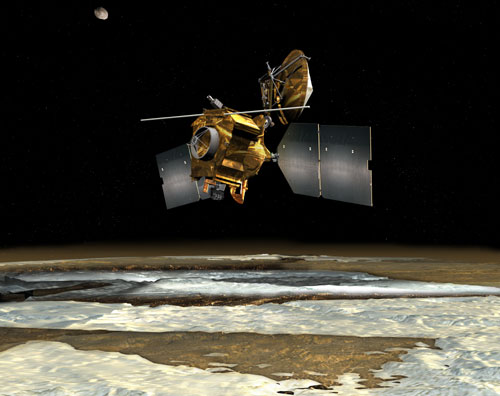Key Takeaways:
On Monday, NASA’s Mars Reconnaissance Orbiter (MRO) fired its thrusters for a 12.5-minute burn that completed its orbital adjustment. The maneuver shifted the low and high points of the probe’s orbit so they remain near Mars’ south and north poles, respectively. MRO’s altitude now ranges from 196 miles (316 kilometers) to 155 miles (250 km) above the surface.
“Getting to this point is a great achievement,” says Dan Johnston, deputy mission manager at the Jet Propulsion Laboratory in Pasadena, California, which manages the $720 million mission.
Monday’s maneuver was MRO’s longest thruster burn since March 10, when its rockets fired for 27 minutes in order to slow the craft enough that Mars’ gravity could snare it into orbit.
During the 3 weeks after MRO’s arrival, the spacecraft took more than 35 hours to complete each elongated orbit. To tighten up and even out the craft’s path around Mars, the flight team dipped the bus-size spacecraft into the planet’s upper atmosphere 426 times between early April and August 30. During this process, called aerobraking, MRO flew at altitudes as low as 61 miles (98 km).
In the final weeks of aerobraking, MRO was flying more than 10 orbits each day.
“The pace of work got extremely demanding as we got down to 2-hour orbits,” notes Johnston. “We had shifts working around the clock.”
By month’s end, controllers will deploy the orbiter’s 33-foot (10 meters) radar antenna, and MRO will thern complete its checkout by returning trial observations from all of its instruments.










